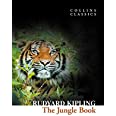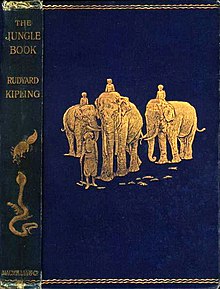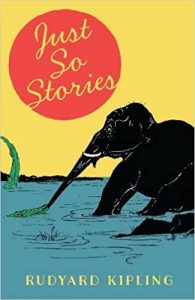So the censors – sorry “sensitivity advisers” – have decreed that Roald Dahl’s Matilda can no longer read Rudyard Kipling. She has to read Jane Austen instead. Why on earth she can’t read both is beyond me but that’s not my point here. I doubt that Matilda was reading Kim or Stalky and Co anyway. I expect she was lapping up Kipling’s wonderful short stories or possibly Puck of Pook’s Hill.
Rudyard Kipling (1865-1936) was born in India which became the backdrop for much of his fiction. A highly successful writer, he was awarded the Nobel Prize for Literature in 1907 and eventually buried in Poet’s Corner in Westminster Abbey. Decades later cakes and handbags were named after him. In 1995 a poll found that “If” was the most popular poem in England.
Of course he was a patriotic supporter of the British Empire and all it stood for. Most people were – including, obviously, Queen Victoria, nineteenth century prime ministers and, in the early decades of the twentieth century millions of ordinary folk like my grandparents. Kipling was a man of his time – widely respected for his writing – and attempts to cancel him retrospectively make no sense at all. Good art in all genres can stand proud on its own irrespective of what any picky inhabitant of the 21st century may think about the creator.
The whole debacle sent me scuttling back to the delights of The Jungle Book (1895) and the Just So Stories (1912) The former, let’s not forget, is a book of short stories not a novel about Mowgli as Disney and many stage adaptations like to hint. The first three are about Mowgli. Thereafter we get the delights of “The White Seal”, “Toomai of the Elephants” and best of all, “Rikki-Tikki-Tavi.”

Rikki-Tikki-Tavi is a mongoose who takes charge of the bungalow garden during the Raj period. He despatches three snakes and saves the white human family. It’s a bit anthropomorphic. Animals don’t talk and cobras don’t plot revenge but it’s powerful and very exciting – especially when Rikki finally confronts Nagaina, the female cobra, in an outhouse bathroom. And along the way, as a child, I learned quite a lot about wildlife in an Indian garden. All fiction enhances general knowledge, as I frequently observe.
I would often read “Rikki-Tikki-Tavi” aloud to classes. It lasts just 40 minutes which is perfect for a single secondary school teaching period. Almost always I could sense attentive tension in the room as we neared the end. On one occasion in the 1990s when I was teaching in a girls’ boarding school I read it to a Year 9 group. The next day a parallel group came in for their lesson and said: “That story you read the others yesterday – will you read it to us please?” They had actually been talking about it amongst themselves and away from the classroom! Music to a teacher’s ears. How can anyone want to “cancel” a writer who can do that?

And so to the Just So Stories. I first heard “How the First Letter Was Written” and “How The Alphabet Was Made” in primary school when an inspired student teacher read them to us. And soon found the others for myself. I’m particularly fond of “How the Leopard got his Spots” and “The Cat that Walked by Himself” but “The Elephant’s Child” is the real pearl.
Of course Kipling was a fine poet (“The Way through the Woods” and “Danny Deever” are, for example, splendid) and it shines through his prose. “The Elephant’s Child” is almost more poetic than a poem with its oft repeated “great grey-green Limpopo river all set about with fever trees”. The crocodile has a “musky, tusky mouth” and the Bi-Coloured-Python-Rock-Snake has a “scalesome, flailsome tail”. It’s engagingly musical which is why any child you read it to will soon start chanting it with you.

Adults must have read it to me a lot when I was little because I can do an abridged amateur version of it from memory. Once, in a restaurant in central France when we’d travelled all day, our small children were very tired and the service was slow, I launched into “The Elephant’s Child” to distract them. After a few minutes I sensed that everything had gone quiet and my husband was grinning incredulously. I then realised that every single person in that busy restaurant was listening. Well, given that most of them were not English I doubt that is was my story telling ability which had caught their attention. It was the compulsive musicality of Kipling’s words which are catchy even if the language isn’t your own. How many other writers can you think of who could do that?
So please don’t let’s belittle Rudyard Kipling, Yes he’s a bit dated and quaint in places and he took colonialism for granted but my goodness, he was a wordsmith who could tell a fine story.
Next week on Susan’s Bookshelves: One Enchanted Evening by Katie Fforde